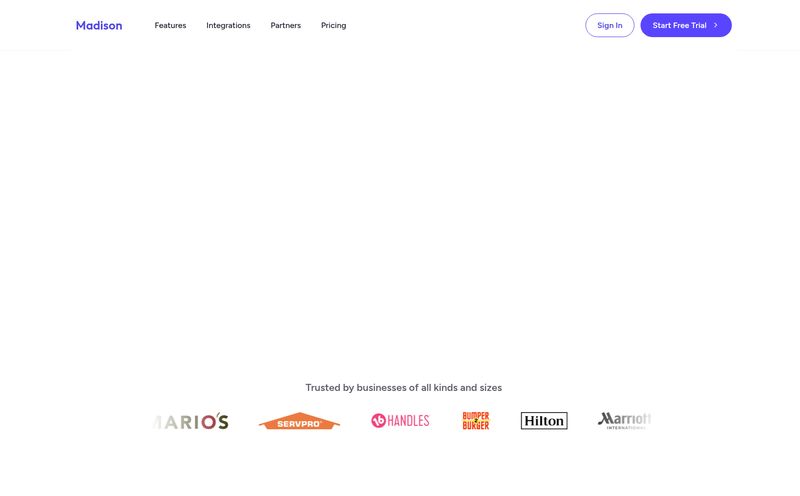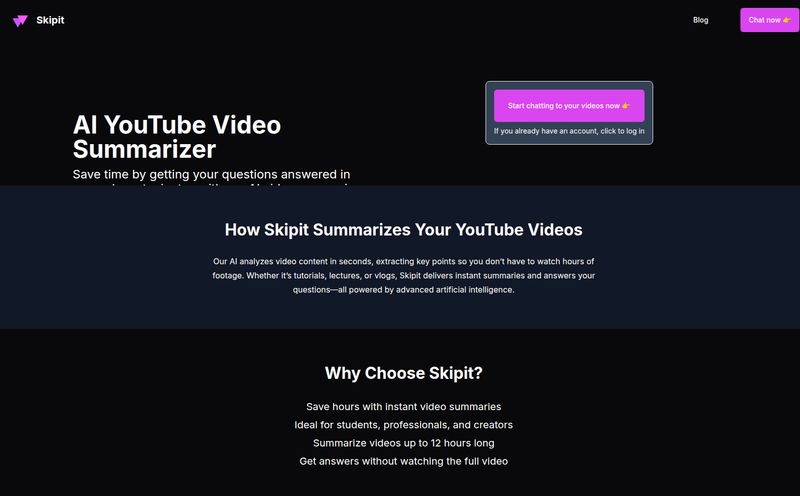I still remember the cold sweat from my first five-figure cloud bill. It was a few years back, at a startup that was growing fast. One minute you're celebrating new users, the next you're staring at an AWS invoice that looks more like a phone number, wondering if you accidentally left a dozen high-end GPU instances running to mine bitcoin. We've all been there, right? That constant, nagging fear that your cloud spend is a wild animal you can't quite tame.
So, when I first heard about a tool called Pump, my professional skepticism kicked in immediately. The claims are… well, they’re bold. Up to 60% savings on your cloud bill. Automated. Zero engineering effort. And the kicker? It's completely free. My internal monologue went something like, "Yeah, right. And I've got a bridge to sell you."
But then I saw Forbes calling them the "Costco of Cloud," and I saw a bunch of YC companies—the kind of startups that live and die by their burn rate—flocking to them. My curiosity got the better of me. Is this the real deal, or just another VC-funded dream with a hidden catch? Let's get into it.
So, What Exactly is Pump?
At its heart, Pump isn't doing magic. It’s just applying a classic, brilliant business model to a very modern problem. Think of it like a wholesale club for your cloud infrastructure. You know how Costco gets cheaper prices on everything from paper towels to rotisserie chickens by buying in massive bulk? Pump does the exact same thing, but for cloud commitments like AWS Reserved Instances (RIs) and Savings Plans.
Normally, getting the best discounts from AWS, GCP, or Azure means committing to a certain amount of usage for one or three years. For a startup, that’s a scary commitment. Who knows what your needs will be in three years, or even three months? You could over-commit and waste money, or under-commit and miss out on savings. It’s a pain.
Pump's AI acts like a super-smart FinOps team that you don't have to hire. It analyzes your usage patterns and, through the power of group buying, purchases the right commitments at the right time. By pooling the demand of hundreds of startups, it can negotiate better deals and manage a portfolio of commitments that’s way more flexible than anything a single company could do on its own. It's a clever solution to a problem that has plagued enginering and finance teams for years.

Visit Pump
The "Free" Part: How Pump Actually Makes Money
Alright, let's address the elephant in the room. In the world of SaaS, “free” usually means you’re the product. Your data is being sold, you're being upsold later, or there's some other shoe waiting to drop. It’s a healthy cynicism to have.
But Pump’s model is refreshingly transparent. They don't charge you a thing. Instead of taking a cut of your savings (which is what most of their competitors do), they make their money directly from the cloud providers. Think about it: AWS and Google want customers to commit to long-term usage. It gives them predictable revenue. Pump is essentially a broker, bringing them a huge block of committed spend from all its customers. For that service, the cloud providers give Pump a small commission. It’s a classic win-win-win:
- You save a ton of money on your bill.
- The cloud provider (AWS, GCP, etc.) gets guaranteed, predictable revenue.
- Pump gets a small cut from the provider for making it all happen.
Frankly, it's a model that makes you wonder why no one did this sooner. You get the savings without the bill at the end of the month for the tool that saved you the money. I gotta admit, it's impressive.
The Good Stuff: Why I'm Genuinely Impressed
Automation That Doesn't Require a PhD
The biggest selling point here, aside from the price tag, is the "zero engineering input" promise. For most startups, the engineers who could potentially figure out RI optimization are the same ones you desperately need building your actual product. Pulling them away to analyze spreadsheets and pricing models is a huge opportunity cost. Pump promises a "Tap, Tap & Save" setup, and from what I've seen, it's pretty close to that. You connect your account, and the AI takes over. No more weekend-long deep dives into your billing console.
The Savings Are Real (Apparently)
An up-to-60% savings claim is wild, but with their group buying model, it's not outside the realm of possibility. The social proof is strong, with glowing testimonials and a client list that includes a lot of Y Combinator alumni. Plus, they offer what amounts to a money-back guarantee. They literally say that if you don't save money, they'll pay you. That's confidence. It removes pretty much all the financial risk from trying it out.
Okay, Let's Talk About the Catch
Nothing is ever perfect, and I wouldn't be doing my job if I didn't point out the things that will make some tech leaders pause. This is where the rubber meets the road.
The Big One: Account Permissions
This is the most significant hurdle. For Pump to work its magic, it needs permission to not only read your usage data but also to write to your account—specifically, to purchase and manage commitments on your behalf. I can already hear the collective gasp from every security team and CISO out there.
Handing over write-level permissions is a major act of trust. Pump is transparent about why they need it, and their security posture is designed to protect this access. But for some organizations, especially those in highly regulated industries like finance or healthcare, this might be a non-starter. It's the fundamental trade-off of the service: you are trading a degree of control for automated savings.
The Not-So-Fine Print
There are a couple of other minor things to be aware of. First, you'll have to go through a KYB (Know Your Business) process. This is a standard anti-fraud measure and pretty common, but it's an extra step in the onboarding. Second, Pump is currently focused on a specific slice of the market: companies spending between $3,000 and $500,000 per month. If you're a massive enterprise spending millions, or a tiny project with a $50 bill, you're not their ideal customer right now. I imagine that will change as they grow.
Pump vs. The Other Guys
I saw a comparison table on their site, and it paints a stark picture. Most cloud cost management platforms are value-add services that charge you for their software, often taking a hefty percentage (their example shows 26%) of the money they save you. It’s a decent model, but it always feels a little strange to get a bill for saving money.
Pump completely sidesteps that. While others are taking a slice of your pie, Pump is getting its slice from the baker. It's a fundamental disruption of the old model, and it's hard to argue with the appeal of keeping 100% of your savings.
My Final Verdict: Should You Give Pump a Shot?
So, is Pump too good to be true? My conclusion is... no, it's not. It's just a very, very good business model.
The decision really comes down to a simple question for your organization: Are you comfortable with the permission trade-off?
If you're a fast-moving startup, a scale-up, or any business where cash flow is king and engineering time is sacred, the answer is probably a resounding yes. The potential upside is enormous, and the risk is mitigated by their guarantee and strong social proof. It's what they'd call a "no-brainer."
If you're in a larger, more traditional enterprise with a very rigid security posture, the conversation will be more complicated. You'll need to do your due diligence on their security and decide if the savings are worth the access. But I'd still argue it's a conversation worth having.
Ultimately, tools like Pump represent a smart evolution in the cloud ecosystem. They democratize cost savings that were previously only accessible to huge companies with dedicated FinOps teams. And for that, I'm genuinely excited to see where they go next.
Frequently Asked Questions About Pump
1. Is Pump really free to use?
Yes, it's completely free for the customer. Pump has a business model where they are compensated by the cloud providers (like AWS and GCP) for bringing them committed spend, so they don't need to charge users.
2. If it's free, how does Pump make money?
Pump makes money through a revenue-sharing agreement with the cloud providers. By aggregating the demand of many companies, they facilitate large-scale commitment purchases, and the cloud providers pay them a commission for this service.
3. What cloud platforms does Pump support?
Pump currently supports Amazon Web Services (AWS), Google Cloud Platform (GCP), and Microsoft Azure.
4. Are the savings guaranteed with Pump?
While results vary, Pump is so confident in its ability to save you money that they offer a guarantee. As stated on their site, if you don't see savings, they will pay you. This makes it essentially risk-free to try.
5. What permissions does Pump need to access my cloud account?
Pump requires read-only permissions to analyze your usage and identify savings opportunities. To execute the savings, it also needs write permissions to purchase and manage cost-saving commitments (like Reserved Instances or Savings Plans) on your behalf.
Conclusion
In a world full of complex and often expensive SaaS tools, Pump’s approach feels like a breath of fresh air. They've found a way to align their success directly with their customers' savings without ever sending them a bill. While the permissions requirement is a valid consideration, the potential for significant, automated savings with zero engineering overhead is an incredibly compelling proposition. For any startup watching its cloud budget closely, Pump is, at the very least, worth a serious look.
Reference and Sources
- Pump Official Website: https://pump.co
- Forbes Article Mention (as cited on Pump's website).



